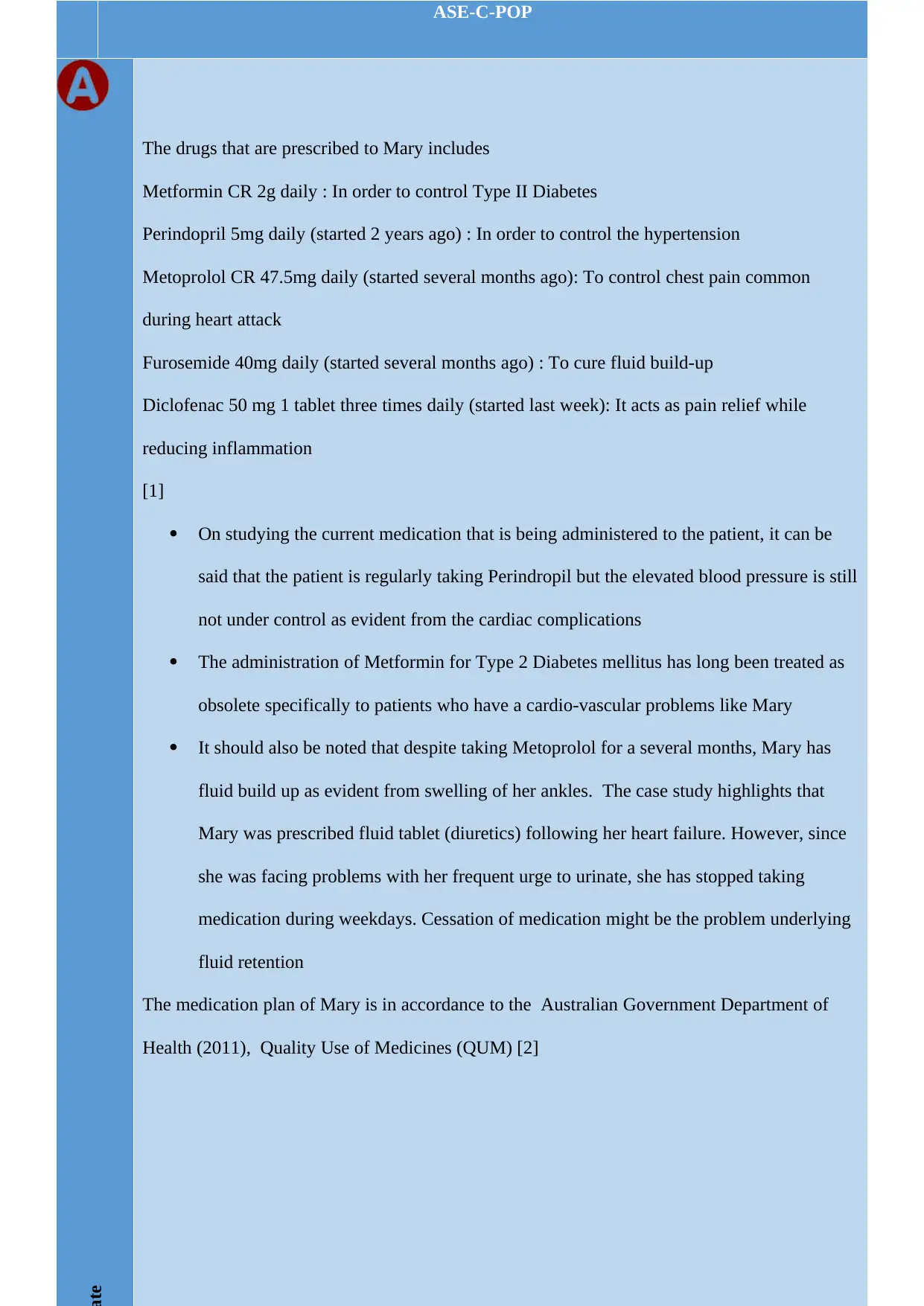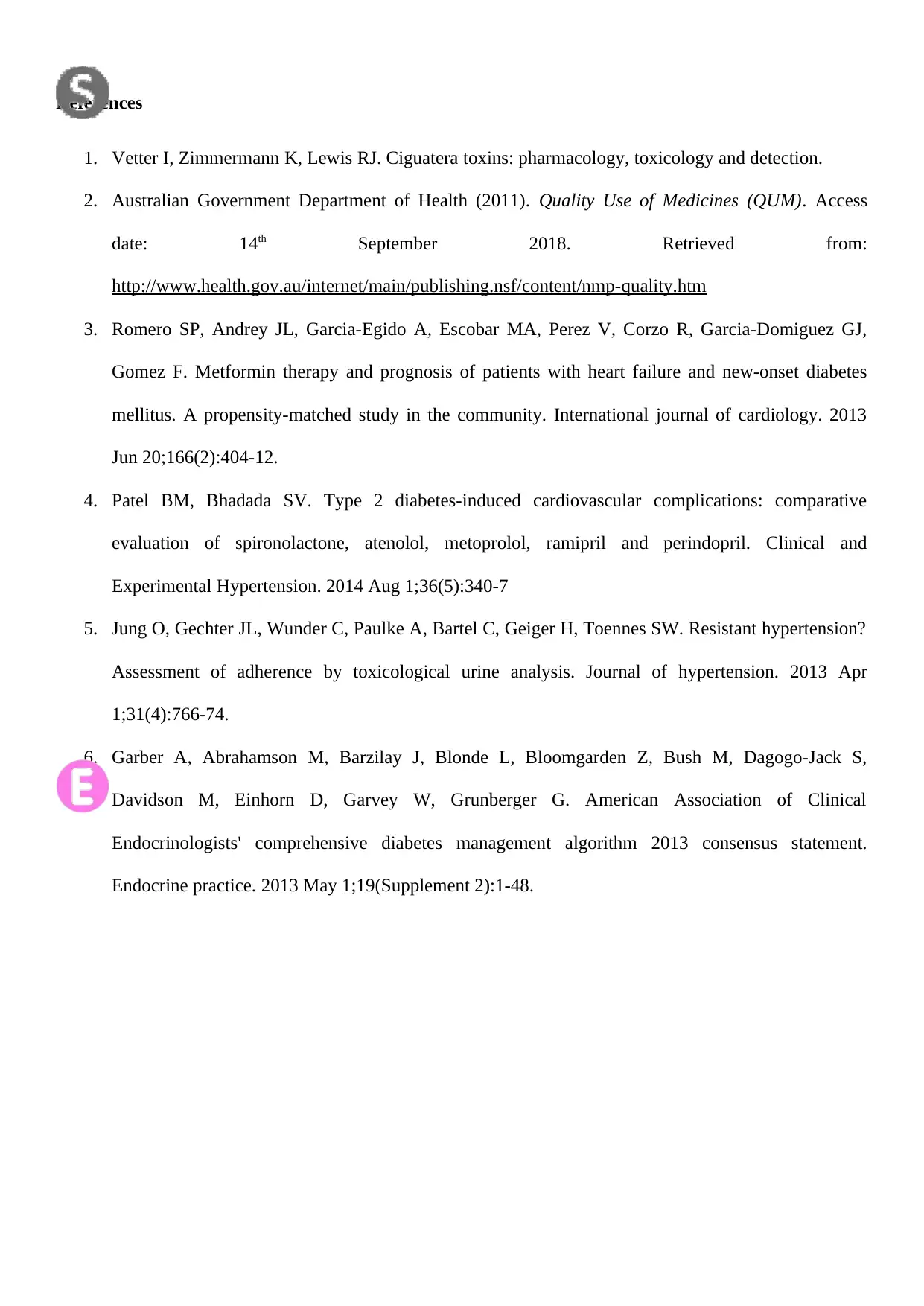Cardiovascular Case Study: Analyzing Mary's Medication Plan - CSB601
VerifiedAdded on 2023/06/06
|3
|596
|327
Case Study
AI Summary
This case study examines the medication plan of a patient named Mary, focusing on her treatment for Type II Diabetes, hypertension, and heart failure. Mary is prescribed Metformin, Perindopril, Metoprolol, Furosemide, and Diclofenac. The analysis reveals that despite taking Perindopril, her blood pressure remains elevated. The use of Metformin for patients with cardiovascular problems is questioned, and the presence of fluid build-up despite Metoprolol use is noted. The study highlights the importance of patient adherence to medication, as Mary's discontinuation of Furosemide due to frequent urination is linked to fluid retention. The medication plan is evaluated in accordance with the Australian Government Department of Health's guidelines on the Quality Use of Medicines. The assignment incorporates references to support the analysis, focusing on the effectiveness of the prescribed drugs and the overall management of Mary's health conditions.
1 out of 3







![[object Object]](/_next/static/media/star-bottom.7253800d.svg)